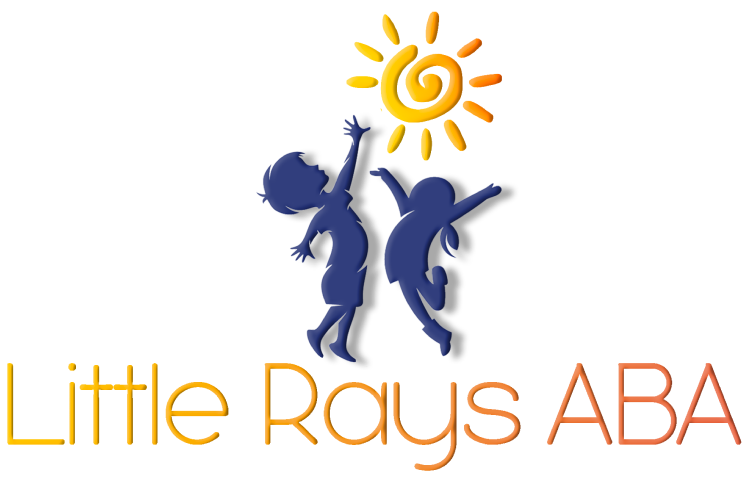Autism Spectrum Disorder (ASD) affects individuals in different ways, with varying levels of support needed based on their unique challenges. To help families, educators, and caregivers understand autism better, experts classify it into three levels: mild, moderate, and severe. Each level has distinct characteristics, influencing social skills, communication, and daily functioning.
By understanding these levels, parents and caregivers can tailor their approach to provide the best possible support. In this guide, we’ll break down each autism spectrum level, explore the challenges and strengths of individuals at each stage, and discuss how autism interventions can improve quality of life.
Understanding Autism Spectrum Levels
Defining Autism Spectrum Disorder
Autism is a developmental condition characterized by challenges in social interaction, communication, and repetitive behaviors. The symptoms can range from mild to severe, influencing how individuals interact with their environment and process information.
Autism is typically identified during early childhood, though some may receive a diagnosis later in life. The exact cause of autism remains unknown, but it is believed to involve a combination of genetic and environmental factors. Understanding these complexities is essential for providing appropriate support and interventions.
Overview of Autism Spectrum Levels
Autism levels are classified into three categories based on the severity of symptoms and the level of support required. These levels help to tailor interventions and resources to meet the specific needs of individuals with autism. Knowing the distinct characteristics of each level provides a clearer picture of the support necessary for those on the spectrum.
- Level 1: Mild - Individuals with Level 1 autism may require minimal support. They often have mild difficulties in social situations and may struggle with organization and planning. However, they can generally function independently with some guidance.
- Level 2: Moderate - Those at Level 2 need more substantial support. Social interactions are more markedly affected, and they may have limited verbal and non-verbal communication skills. Behavioral challenges, such as difficulties with changes in routine, are more prevalent.
- Level 3: Severe - Level 3 individuals require very significant support. They face profound challenges with social communication and often exhibit intense repetitive behaviors. Independent functioning is limited, and they need constant assistance to navigate daily life.
Understanding these autism spectrum levels is crucial for families, educators, and healthcare providers. It helps in creating effective support plans and interventions that enhance the quality of life for individuals with autism.
Level 1: Mild
Characteristics of Level 1
Individuals diagnosed with Level 1 Autism Spectrum Disorder (ASD) experience mild symptoms. They might exhibit subtle communication difficulties and show slight challenges with social interactions. Despite these challenges, they can often function relatively independently in daily life.
Common traits of Level 1 ASD include:
- Difficulty initiating and maintaining conversations
- Trouble interpreting social cues, such as body language or facial expressions
- Preference for routines and predictability
- Mildly restricted interests or repetitive behaviors
People at this level may appear awkward in social situations but are usually able to mask their difficulties better than those with higher support needs.
Challenges and Strengths
Challenges:
- Navigating social settings can be overwhelming, leading to social isolation.
- Sensory sensitivities may cause discomfort in certain environments, like crowded places.
- Managing change or unexpected events can induce stress and anxiety.
- Limited range of interests might impact daily activities and social relationships.
Strengths:
- Many individuals at this level possess average or above-average intelligence.
- They often have strong attention to detail and excel in tasks requiring focus and precision.
- Their adherence to routines can make them reliable and consistent in tasks.
- Some develop remarkable expertise in their areas of interest, contributing significant value in specialized fields.
Understanding these characteristics and supporting their challenges while fostering their strengths can help individuals with Level 1 ASD lead fulfilling lives.
Level 2: Moderate
Characteristics of Level 2
Level 2 Autism Spectrum Disorder falls in the moderate range of the spectrum. Individuals at this level exhibit a range of behaviors and abilities that can significantly affect their daily lives. Key characteristics include:
- Social Challenges: Individuals may struggle with social interactions and may have difficulty understanding social cues. They might prefer to be alone or may seem uninterested in forming relationships.
- Communication Difficulties: While they may have some ability to speak and understand language, their communication skills might be limited. They often have trouble initiating conversations and maintaining the flow of dialogue.
- Repetitive Behaviors: There is a marked tendency for repetitive behaviors and restricted interests. This can include repeated body movements, fixation on particular subjects, and strict adherence to routines.
- Sensory Sensitivities: Sensitivity to sensory stimuli such as sounds, lights, and textures is common. This can lead to stress or discomfort in various environments.
Support Needs and Abilities
Individuals at Level 2 require substantial support to manage daily life and achieve their potential. Their support needs and capabilities include:
- Social Support: They benefit from structured social skills training and support groups to help them navigate social interactions. Supervised social activities can also provide them with opportunities to practice and improve their skills.
- Communication Assistance: Speech therapy can be critical in improving their ability to communicate effectively. Alternative communication methods, such as visual aids or communication devices, may also be helpful.
- Behavioral Support: Behavioral intervention plans are often necessary to manage repetitive behaviors and rigid routines. Behavioral therapists can work on reducing these behaviors while teaching more adaptive skills.
- Environment Modifications: Sensory-friendly environments can help minimize sensory overload. This might include quiet spaces, gentle lighting, and specific textures that are calming to the individual.
- Educational Support: Tailored educational plans with individualized instruction and accommodations are vital. These plans often involve the use of visual supports, a predictable routine, and hands-on learning activities to enhance understanding and engagement.
By understanding the specifics of Level 2 Autism Spectrum Disorder, family members, educators, and caregivers can better provide the support and interventions needed for individuals to thrive.
Level 3: Severe
Characteristics of Level 3
Level 3 of ASD is categorized by significant challenges in communication and behavior. Individuals at this level often require substantial support in their daily lives. They may exhibit behaviors that are highly repetitive and have difficulties with adaptive functioning.
Some key characteristics of Level 3 ASD include:
- Severe communication deficits: Limited verbal skills, and often, individuals may rely on alternative communication methods.
- Markedly restricted interests: A strong focus on certain activities or topics to the exclusion of others.
- Intense difficulty changing routines: Resistance to change and a strong preference for familiar routines.
- Frequent outbursts or meltdowns: Responses to sensory overload or frustration can result in significant behavioral challenges.
Intensive Support and Care
Given the substantial challenges faced by individuals at Level 3, intensive support and care are essential to help them navigate their daily lives. This level of support is usually comprehensive, involving various therapeutic and practical interventions.
Some critical elements of support for individuals at Level 3 include:
- 24/7 supervision: Ensuring consistent monitoring to guarantee safety and well-being.
- Highly structured environments: Creating routines and predictable patterns to minimize anxiety and stress.
- Specialized communication tools: Utilization of augmentative and alternative communication (AAC) devices to facilitate interaction.
- Personalized behavioral interventions: Tailoring strategies to manage and mitigate challenging behaviors.
- Extensive collaboration with professionals: Engaging with a multidisciplinary team, including speech therapists, occupational therapists, and behavioral specialists.
Caregivers play a crucial role in providing the necessary support for individuals with Level 3 autism spectrum disorder, often coordinating between various services and professionals to ensure holistic care.
Diagnosis and Evaluation
Understanding autism spectrum levels involves a thorough diagnosis and evaluation. This process is comprehensive and requires the expertise of various professionals to ensure an accurate assessment.
The Diagnostic Process
The diagnostic process for autism spectrum disorder typically begins with the observation of behaviors and development patterns. Parents, caregivers, and teachers are often the first to notice signs that may prompt a formal evaluation. The steps in the diagnostic process include:
- Initial Screening: Basic screening tools help identify children who may have developmental delays or other conditions. Questionnaires and checklists are used to gather information about the child's behavior and development.
- Comprehensive Diagnostic Evaluation: A detailed assessment is necessary to determine if the child meets the criteria for autism spectrum disorder. This evaluation includes a thorough review of the child's history, direct observation, and structured interviews with parents and caregivers.
Assessment Tools and Professionals
A variety of assessment tools and specialized professionals are involved in diagnosing autism spectrum levels. These tools help to identify the specific needs and strengths of the individual.
Assessment Tools:
Autism Diagnostic Observation Schedule (ADOS): This is a standardized diagnostic tool that assesses social interaction, communication, and behavior through structured and semi-structured tasks.
- Autism Diagnostic Interview-Revised (ADI-R): A structured interview conducted with parents or caregivers that focuses on the child’s current and past behaviors.
- Childhood Autism Rating Scale (CARS): This observational tool helps identify children with autism and determine the severity by scoring their behavior.
- Social Communication Questionnaire (SCQ): A screening tool for children aged 4 years and older that assesses communication skills and social functioning.
Professionals Involved:
Developmental Pediatricians: Pediatricians specializing in child development conduct initial evaluations and follow-ups.
- Child Psychologists and Psychiatrists: These professionals provide detailed behavioral assessments and may also offer therapy and support.
- Speech and Language Pathologists: They assess communication skills and provide interventions to improve language and social communication.
- Occupational Therapists: They evaluate and support the sensory and motor needs of the individual, helping to improve daily functioning.
The collaboration of these professionals ensures a comprehensive understanding of the individual's abilities and needs, leading to better-tailored support and intervention plans. Accurate identification of autism spectrum levels is crucial for providing appropriate care and improving the quality of life for those with ASD.
Support and Interventions
Individualized Support Plans
Individualized Support Plans (ISPs) are essential for individuals diagnosed with ASD. These plans are tailored to meet the unique needs and challenges of each person, taking into account their specific autism spectrum level. The goal of an ISP is to provide appropriate support and interventions to help individuals achieve their full potential.
Key components of an ISP include:
- Assessment of Needs: Evaluating the individual's strengths, weaknesses, and areas requiring support.
- Goal Setting: Establishing short-term and long-term objectives that are realistic and achievable.
- Support Strategies: Identifying effective methods and resources to support the individual in various settings (home, school, community).
- Monitoring and Evaluation: Regularly reviewing progress and adjusting the plan as needed.
Therapeutic Interventions and Services
Therapeutic interventions and services play a crucial role in supporting individuals across autism spectrum levels. These interventions are designed to address a range of challenges, including communication, social skills, and behavior.
Types of therapeutic interventions include:
- Behavioral Therapy: Techniques such as Applied Behavior Analysis (ABA) to improve specific behaviors.
- Speech Therapy: Focuses on improving communication skills, both verbal and non-verbal.
- Occupational Therapy: Enhances daily living skills and motor abilities.
- Social Skills Training: Helps individuals develop interpersonal skills and navigate social interactions.
- Sensory Integration Therapy: Addresses sensory processing issues that may affect behavior and learning.
Each therapy is tailored to the individual's needs, ensuring that the support provided is effective and meaningful. Regular collaboration between therapists, caregivers, and educators is vital to the success of these interventions.
In conclusion, understanding autism spectrum levels and implementing individualized support plans and therapeutic interventions are key to empowering individuals with ASD. By providing the right support, they can lead fulfilling and productive lives.
At Little Rays ABA, we specialize in providing personalized ABA therapy for children at all autism spectrum levels. Our expert team is dedicated to helping your child develop essential life skills, improve communication, and build independence. Contact us today to learn how our services can support your child's unique journey.
FAQs
What are the three levels of autism?
Autism Spectrum Disorder is categorized into three levels based on the amount of support an individual needs: Level 1 (mild), Level 2 (moderate), and Level 3 (severe). These levels help determine the appropriate interventions and resources.
Can a person move from one autism level to another?
While autism is a lifelong condition, symptoms and support needs can change over time. With therapy, skill development, and environmental adjustments, individuals may require less or more support, affecting their level classification.
How can parents support a child at different autism levels?
Support strategies vary depending on the level of autism. Children with mild autism may benefit from social skills training, while those with moderate to severe autism often require structured interventions like ABA therapy to develop communication and daily living skills.
Sources:
https://pmc.ncbi.nlm.nih.gov/articles/PMC10500663/
https://pmc.ncbi.nlm.nih.gov/articles/PMC7082249/
https://health.ucdavis.edu/news/headlines/autism-characteristics-can-change-significantly-from-ages-3-to-11/2022/04
https://rutgershealth.org/news/first-large-study-profound-autism-finds-rising-problem-disparate-impacts
https://today.ucsd.edu/story/embryonic-brain-overgrowth-dictates-autism-severity-new-research-suggests
Unlock Your Child's Potential with Expert ABA Therapy!
At Little Rays ABA, we provide compassionate, evidence-based ABA therapy to help children with autism thrive. Our personalized approach fosters growth in communication, social skills, and independence.
Get In Touch With Us Today to Get Started With ABA Therapy!
Related Posts
MENU
GET IN TOUCH
7117 San Salvador Dr Boca Raton, FL 33433
3200 Collins Ave Miami Beach, FL 33140





